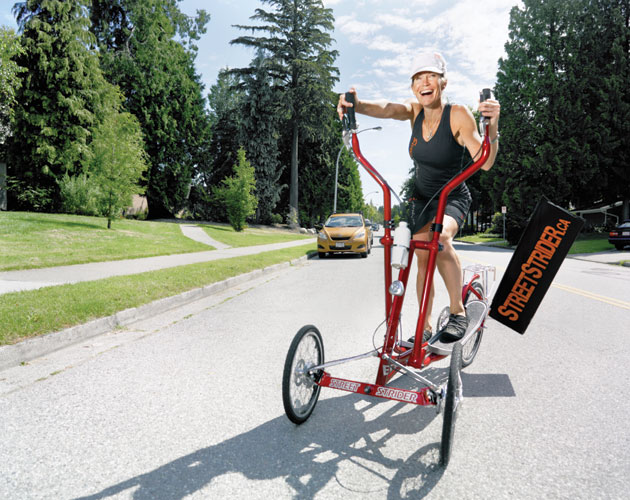Pole Appeal: Fitness at any Age

I may be walking with poles as I stride through the trees, but group leader Barb Gormley is quick to point out that unless I’m using the proper technique, I may as well be walking with sticks. Gormley, the director of education for Urban Poling – a company that promotes what is also known as Nordic walking and sells the poles – is guiding a group of us through the trails of Toronto’s High Park. The regular members of this particular group, ranging in age from 20 to 70, meet every Sunday. Newcomers are shown the basics using lightweight poles, which have an ergonomic strapless handle and boot-like tips.
The incentives to use the right technique are compelling. As opposed to walking, which only engages the muscles under your belly button, urban poling uses 90 per cent of the muscles in your body by bringing the upper body into the workout.
One of the draws to urban poling is how accessible it is to all age groups, especially seniors. There are specially designed Activator poles targeted at seniors and those recovering from chronic conditions and injuries. The strapless ergonomic handles are ideal for those with arthritis, and the bell-shaped tips provide greater stability and weight-bearing capabilities than the regular urban pole’s boot-shape tip.
Graham Watts, a co-founder of Urban Poling Inc., says Activator poles are also a useful aide in preventing falls. “For a lot of seniors, confidence becomes an issue, and now you have two poles in your hands, so you have this added support,” he says.
Using the poles reduces impact on the knees, hips and ankles. Also, users show improved posture and improved bilateral and rhythmical movement.
But don’t think only people with restraints on their mobility can get a workout from urban poling. One proponent of this fitness activity is Lynn Kanuka, who is best known for her bronze medal performance at the Los Angeles Olympic Games in 1984.
Even as a high-level performance athlete, Kanuka finds that walking with urban poles provides a baseline for fitness and gets her outside.
“I think I’m stronger in my running at this stage of my life because of my Nordic walking,” she says. “I’ve never enjoyed my own walking or running more.”
Another low-impact activity that Kanuka raves about is the new StreetStrider, for which she is a dealer in British Columbia.
“It’s literally an elliptical trainer on wheels and it’s a fantastic way to move without any impact,” she says. “It gets you out of the gym and onto the streets and trails in the fresh air.”
Getting outside is part of the appeal of Nordic walking and the trend is spreading across the country. According to Watts, community centres are offering classes, many seniors homes incorporate it into therapy, and even high schools have sessions.
Kanuka imagines a time in the near future where Nordic walking is as popular in Canada as it is in Scandinavia, where it originates. She describes how most trails there are designated for pole walkers. On this Sunday when I am walking in High Park, however, the polers are in the minority and attract quite a few looks – and the odd shout-out of “Hey, you forgot your skis.” Something that makes the regulars groan.
But they’ll have the last laugh. Because they know that this is so much more than walking with sticks.